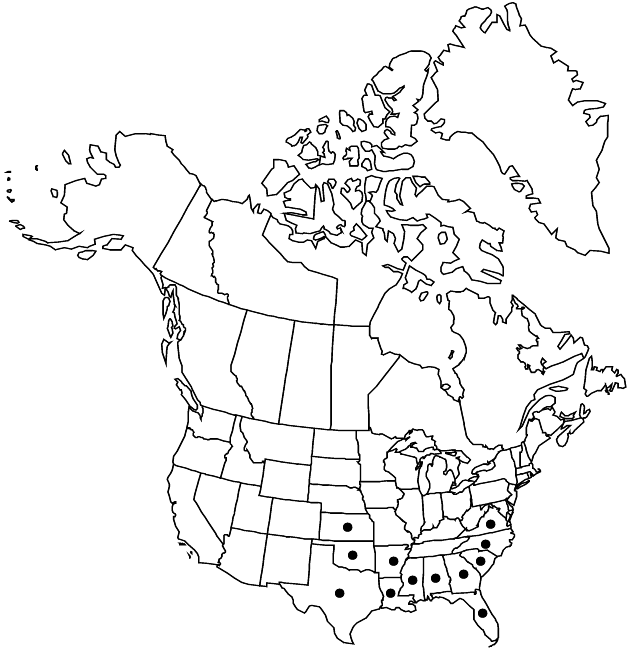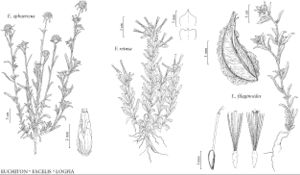Difference between revisions of "Facelis retusa"
Linnaea 34: 532. 1866.
Common names: Annual trampweed
Illustrated
Basionym: Gnaphalium retusum Lamarck in J. Lamarck et al., Encycl. 2: 758. 1788
Treatment appears in FNA Volume 19. Treatment on page 443.
imported>Volume Importer |
imported>Volume Importer |
||
| Line 56: | Line 56: | ||
|publication year=1866 | |publication year=1866 | ||
|special status=Illustrated | |special status=Illustrated | ||
| − | |source xml=https:// | + | |source xml=https://bitbucket.org/aafc-mbb/fna-data-curation/src/2e0870ddd59836b60bcf96646a41e87ea5a5943a/coarse_grained_fna_xml/V19-20-21/V19_733.xml |
|tribe=Asteraceae tribe Gnaphalieae | |tribe=Asteraceae tribe Gnaphalieae | ||
|genus=Facelis | |genus=Facelis | ||
Latest revision as of 20:55, 5 November 2020
Stems usually with decumbent to nearly procumbent branches arising from bases, 3–30 cm, loosely tomentose. Leaves crowded; blades 7–20(–30) × 1.5–4 mm, apices truncate-apiculate to retuse. Heads: clusters subtended by bractlike leaves. Cypselae 1.6 mm; pappi 10–11 mm. 2n = 14.
Phenology: Flowering Mar–Jun.
Habitat: Lawns, roadsides, pastures, other disturbed sites, usually on sandy soils
Elevation: 0–100 m
Distribution
Loading map...

Ala., Ark., Fla., Ga., Kans., La., Miss., N.C., Okla., S.C., Tex., Va., South America, Australia.
Discussion
Selected References
None.
Lower Taxa
None.
